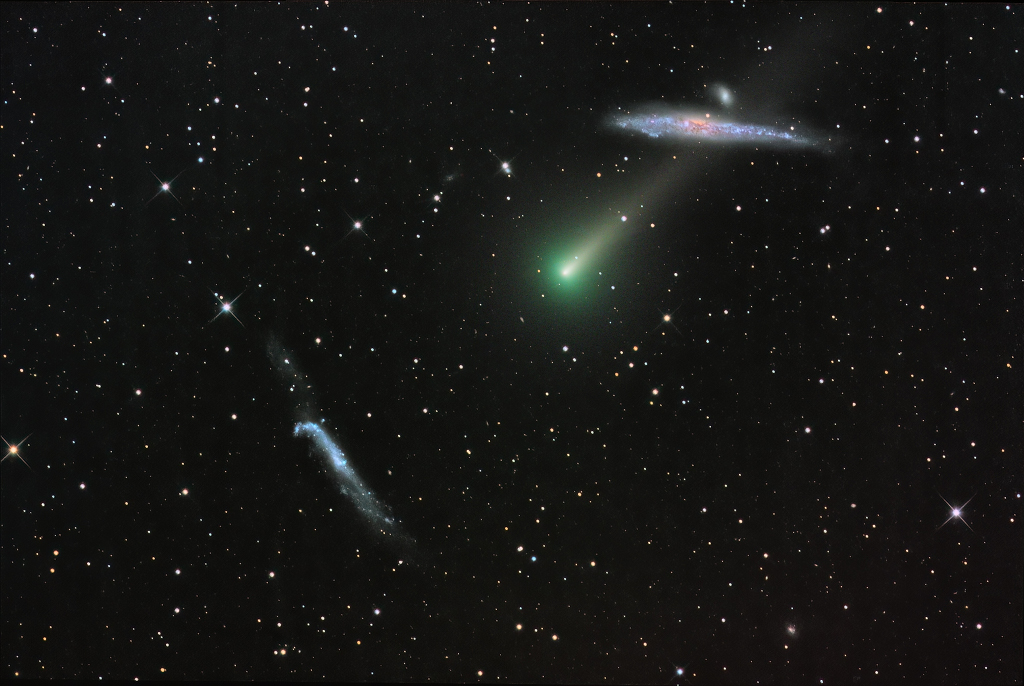2021年12月03日
Comet Leonard and the Whale Galaxy
Image Credit & Copyright: Gregg Ruppel
Explanation: Sweeping through northern predawn skies, on November 24 Comet Leonard (C/2021 A1) was caught between two galaxies in this composite telescopic image. Sporting a greenish coma the comet’s dusty tail seems to harpoon the heart of NGC 4631 (top) also known as the Whale Galaxy. Of course NGC 4631 and NGC 4656 (bottom, aka the Hockey Stick) are background galaxies some 25 million light-years away. On that date the comet was about 6 light-minutes from our fair planet. Its closest approach to Earth (and even closer approach to Venus) still to come, Comet Leonard will grow brighter in December. Already a good object for binoculars and small telescopes, this comet will likely not return to the inner Solar System. Its perihelion, or closest approach to the Sun, will be on January 3, 2022.
Tomorrow’s picture: light-weekend
李奥纳多彗星与鲸鱼星系
影像提供与版权: Gregg Ruppel
说明: 在这幅摄于11月24日的望远镜组合影像里,正在清晨北天扫掠的李奥纳多彗星(C/2021 A1),当时恰好位在2个星系之间。而曳着泛绿彗发的这颗彗星,其尘尾则看似飞射NGC 4631(右上;亦名为鲸鱼星系)心脏的鱼叉。其实NGC 4631和NGC 4656(左下;曲棍球棒星系),都是远在2千5百万光年之外的背景星系。而在拍照的那天,这颗彗星与地球的距离约为6光分。在今年12月,逐渐增亮的这颗彗星,会来到离地球不远、但更靠金星的位置。目前已是双筒和小望远镜巡天好标的之李奥纳多彗星,未来很可能永不再返太阳系内围。它将在2022年1月3日,行进到离太阳最近的近日点。
明日的图片: light-weekend



